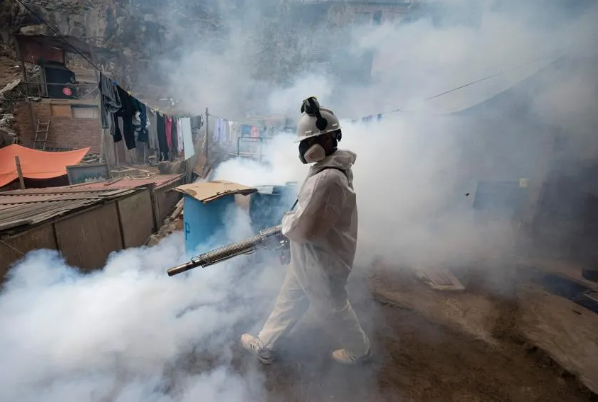Peru Declares Health Emergency after Dengue Surge
The Peruvian government has declared a 90-day health emergency in light of the rapidly escalating dengue fever outbreak sweeping through the country. As of February 27th, over 31,000 cases and 32 deaths have been reported across 20 of Peru’s 25 regions. The measure enables urgent mobilization of resources to contain the viral disease transmitted by mosquitoes.
Dengue Situation in Peru
Peru’s Health Minister Cesar Vasquez announced the health emergency citing the sheer scale of increase in dengue infections this year. Cases have spiked 188% since 2022, with the tally until February 2023 surpassing the full-years’ count for four preceding years.
The tropical regions of Madre de Dios, Ucayali and Loreto have recorded over 5,000 cases each so far. The capital Lima has seen a nearly 300% jump accounting for 40% of total cases countrywide. February alone has added over 10,600 new cases, portending a worsening outbreak.
Experts suspect the actual caseload could be higher than official data, given potential underreporting from remote areas. The disease has claimed 32 lives so far including that of two doctors, with another death reported just as the emergency was declared.
Government Response
The 90-day health emergency applies to districts reporting the highest incidence across 20 regional jurisdictions. It empowers rapid deployment of financial, human and logistic resources to contain the outbreak.
Special priority will be accorded to boosting surveillance, diagnosis and vector control measures. Health and sanitation campaigns will be strengthened while monitoring will expand to districts not currently impacted.
Medical teams and essential supplies can now be mobilized faster to worst-affected zones. Temporary accommodation and transport provisions are being set up for extra healthcare staff needed locally.
The decree also initiates compulsory cleanup drives targeting mosquito breeding grounds like water logging areas near construction sites and homes. Fumigation efforts will also be augmented during the 3-month emergency phase.
Causes Behind the Surge
Peru’s tropical climate has always made it vulnerable to mosquito-borne diseases like malaria, chikungunya, Zika and dengue. But epidemics have grown more frequent in recent years due to ecological shifts linked to climate change.
The current dengue crisis follows two prior outbreaks in 2019 and 2022. Scientists believe natural drivers like the El Niño warming of Pacific Ocean water are enabling mosquito larvae to thrive in expanded habitats. Deforestation and uncontrolled urbanization also spawn new breeding grounds.
Moreover, researchers say the dengue virus may be evolving to spread faster and cause more severe illness among humans. Simultaneous circulation of four distinct dengue serotypes enables complex viral interaction and mutations. Declining population immunity levels also enables wider transmission.
Category: International / World Current Affairs








